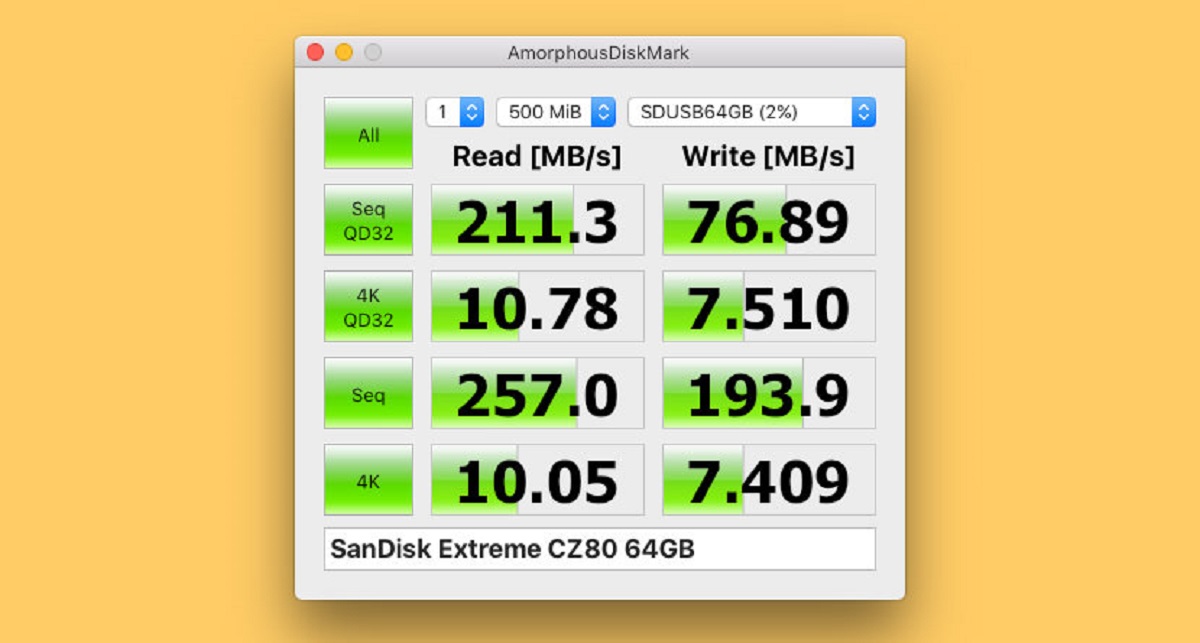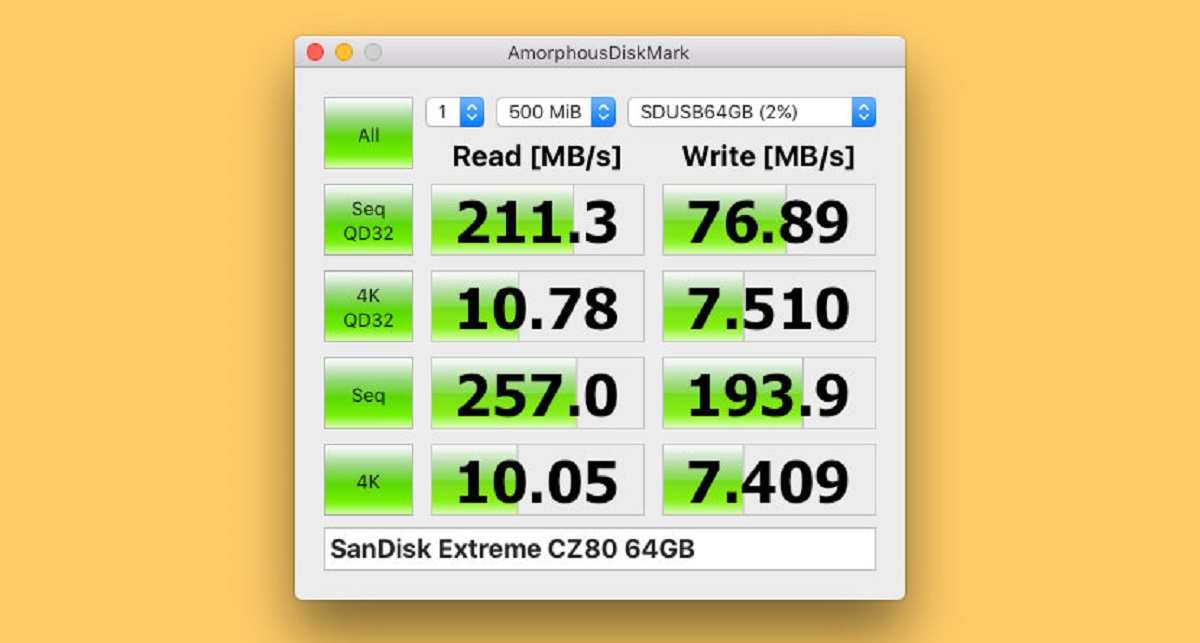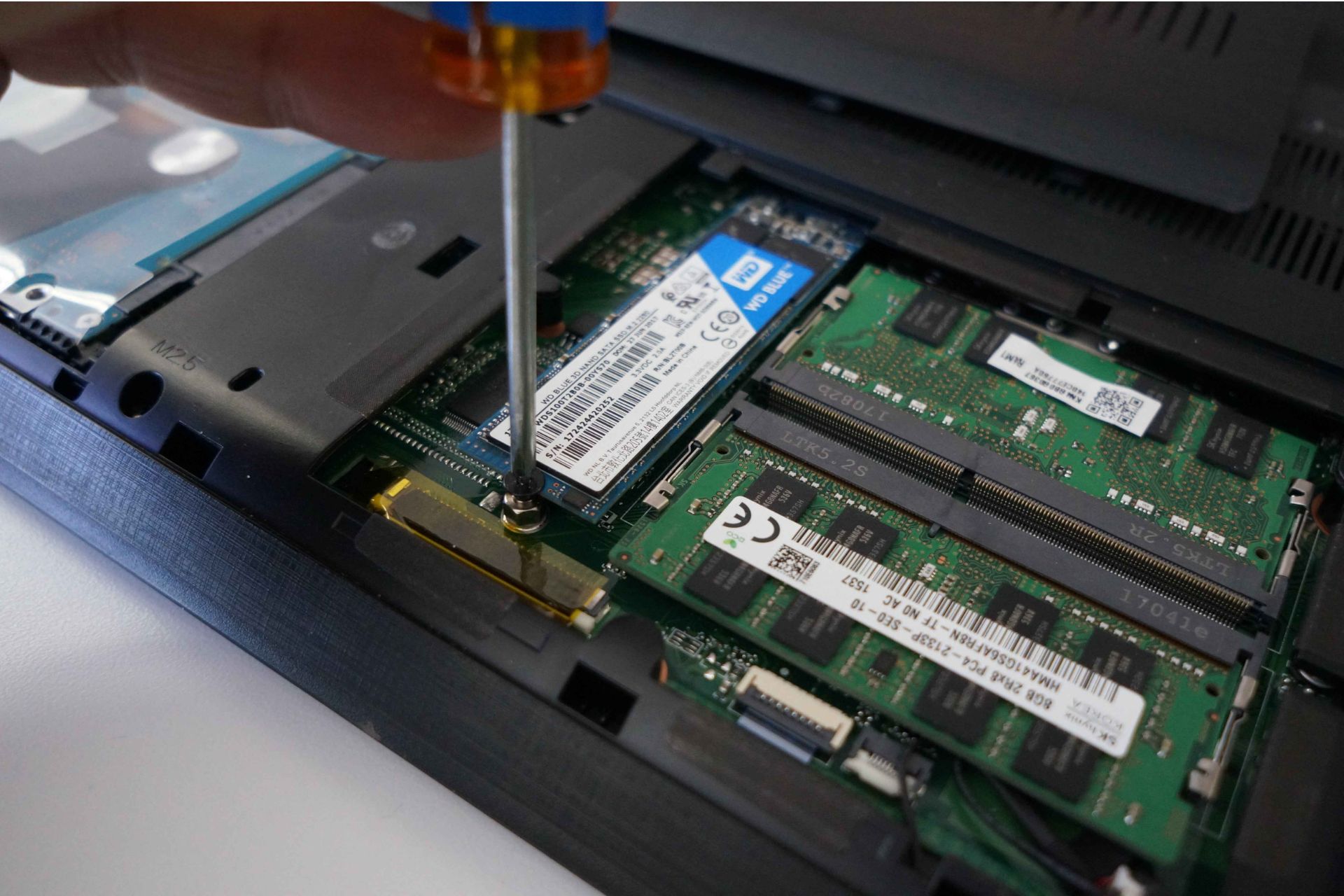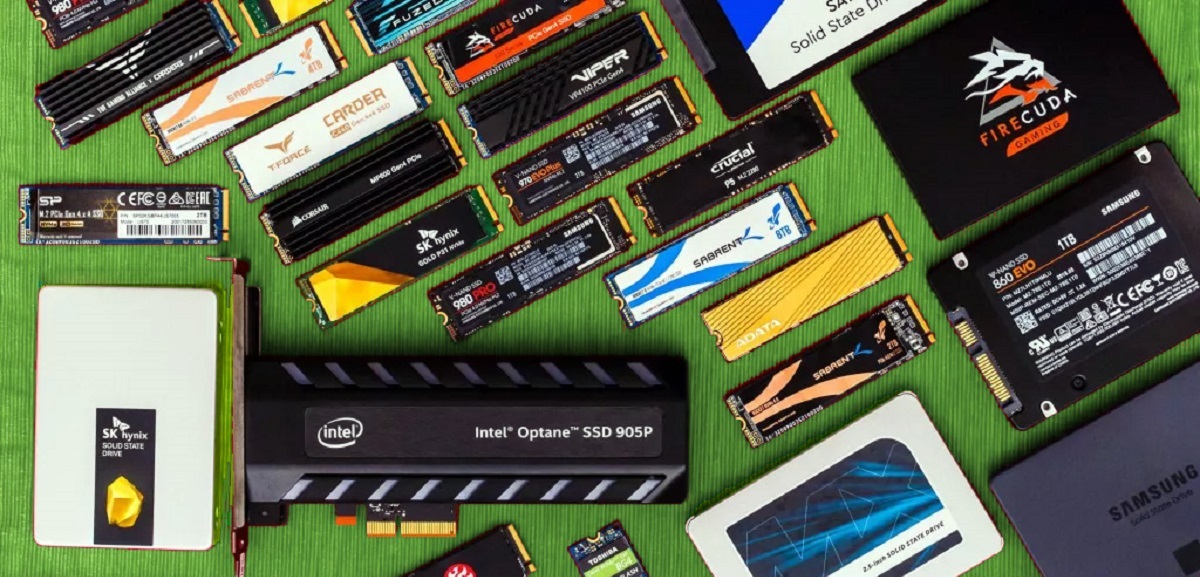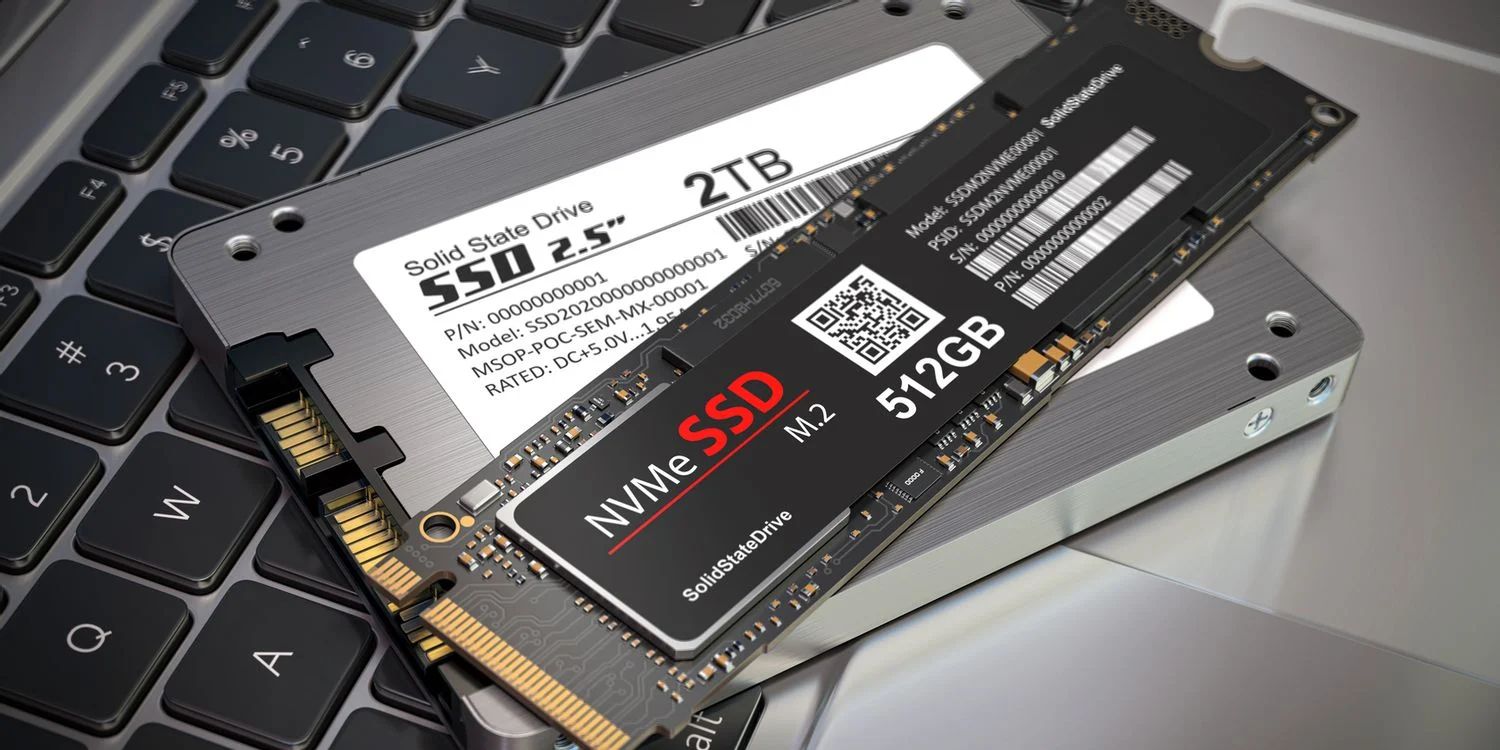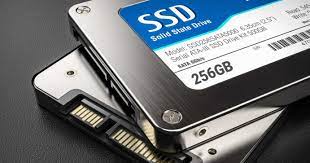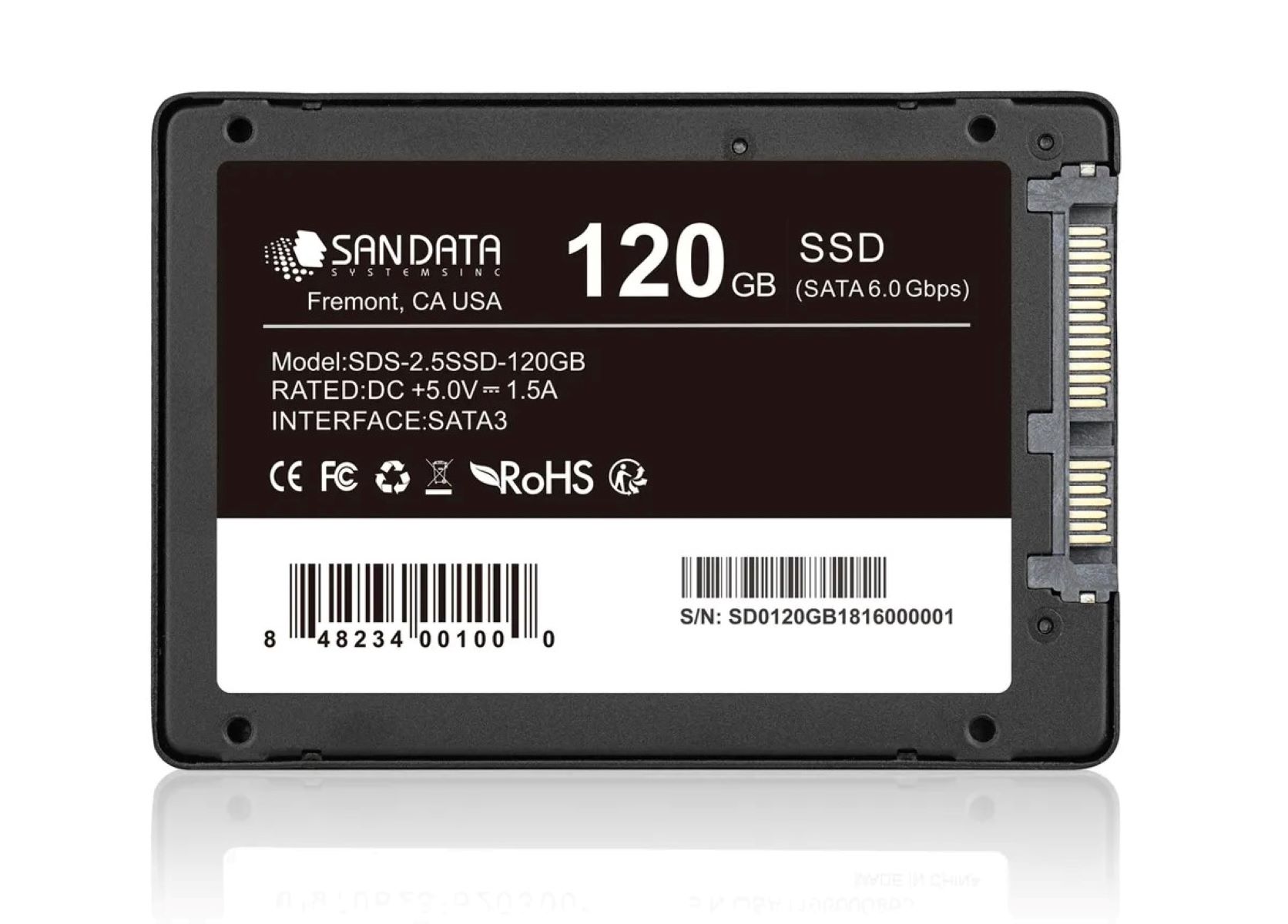Introduction
Welcome to the world of Solid-State Drives (SSDs), where speed and performance reign supreme. As technology continues to advance at a rapid pace, the demand for faster and more efficient storage solutions has become increasingly critical. Gone are the days of traditional mechanical hard drives with their sluggish performance and long loading times. Now, SSDs have taken center stage with their lightning-fast speeds, allowing users to access their data with unparalleled speed and efficiency.
An SSD is a data storage device that utilizes flash memory to store and retrieve data without the need for any moving parts. Unlike traditional hard drives, which rely on spinning disks and mechanical read/write heads, SSDs provide a significant boost in speed and performance by using integrated circuits to store and read data. This difference in technology has allowed SSDs to become the go-to choice for many users seeking faster and more reliable storage solutions.
When it comes to SSDs, speed matters. The speed of an SSD is determined by various factors, including sequential read and write speeds, random read and write speeds, and 4K random read and write speeds. These different speed metrics play a crucial role in determining how quickly an SSD can access and transfer data.
In this article, we will delve into the different aspects of SSD speed, explore common speed ratings and benchmarks, and help you determine what constitutes a good speed for an SSD. Whether you are a tech enthusiast, a gamer, or simply someone looking to upgrade their storage solution, understanding what to look for in an SSD’s speed can make all the difference in your computing experience.
What Is an SSD?
An SSD, or Solid-State Drive, is a type of storage device that has become increasingly popular in recent years. Unlike traditional mechanical hard drives, which use spinning disks and magnetic platters to store and retrieve data, an SSD utilizes flash memory chips to store data electronically.
The use of flash memory in SSDs provides several advantages over traditional hard drives. First and foremost, SSDs are significantly faster. Due to the lack of moving parts, they offer faster boot-up times, quicker file transfers, and reduced application load times. This increased speed can greatly enhance the overall performance of your computer.
In addition to speed, SSDs also offer improved durability and reliability. Since they do not rely on mechanical components, such as spinning disks and read/write heads, SSDs are less prone to physical damage and data loss due to shock or vibration. This makes them an ideal choice for portable devices such as laptops or external drives.
Another advantage of SSDs is their energy efficiency. Traditional hard drives require more power to operate due to the constant spinning of disks and movement of read/write heads. SSDs, on the other hand, consume less energy, which can result in longer battery life for laptops and lower electricity bills for desktops.
It is worth noting that SSDs come in different form factors to accommodate various devices. The most common form factor is the 2.5-inch drive, which is compatible with most laptops and desktop computers. There are also smaller form factors, such as M.2 and PCIe, which are commonly used in thin and light laptops and high-performance desktop systems.
Overall, the use of SSDs has revolutionized the storage industry, bringing faster performance, improved reliability, and energy efficiency to modern computing devices. As the prices continue to decline, SSDs have become an increasingly popular choice for both casual users and professionals who demand high-speed storage solutions.
What Determines the Speed of an SSD?
The speed of an SSD is determined by various factors, all of which contribute to its overall performance and responsiveness. These factors include the type of memory, the controller, and the interface used in the SSD.
One of the primary factors that affect the speed of an SSD is the type of memory it uses. SSDs typically utilize either Single-Level Cell (SLC), Multi-Level Cell (MLC), or Triple-Level Cell (TLC) NAND flash memory. SLC memory provides the fastest performance but comes at a higher cost. MLC memory strikes a balance between speed and affordability, while TLC memory offers higher storage capacities at a lower cost but sacrifices some speed. It’s important to consider your needs and budget when choosing an SSD with the right type of memory.
The controller is another crucial component that impacts the speed of an SSD. The controller acts as the brain of the SSD, managing data flow, error correction, and wear leveling. A high-quality controller can greatly enhance the performance of an SSD by optimizing data transfer and improving overall responsiveness.
The interface is yet another determinant of an SSD’s speed. The most commonly used interface for SSDs is Serial ATA (SATA), which has different generations, such as SATA II and SATA III. SATA III offers faster data transfer rates compared to SATA II and is the recommended choice for optimal SSD performance. However, newer interfaces like PCI Express (PCIe) offer even faster speeds and are more suitable for high-performance systems.
In addition to these factors, the firmware of an SSD plays a crucial role in its speed. Firmware updates can improve performance by addressing issues and optimizing the operation of the SSD. It’s essential to keep the firmware up to date to benefit from the latest improvements and enhancements.
It’s worth noting that while the speed of an SSD is crucial, it’s not the only consideration when choosing an SSD. Factors such as storage capacity, cost, and reliability should also be taken into account to ensure you select the right SSD for your needs.
In the next sections, we will explore different speed metrics of SSDs, such as sequential read and write speeds, random read and write speeds, and 4K random read and write speeds, to gain a better understanding of their impact on an SSD’s overall performance.
Sequential Read and Write Speeds
Sequential read and write speeds are two important speed metrics that determine how quickly an SSD can read and write data in a sequential manner. These speeds are typically measured in megabytes per second (MB/s) or gigabytes per second (GB/s).
Sequential read speed refers to how quickly an SSD can retrieve data in a sequential order. It is particularly important for tasks such as loading large files, launching applications, or booting up the operating system. A higher sequential read speed translates to faster loading times and a more responsive computing experience.
Sequential write speed, on the other hand, refers to how quickly an SSD can write data in a sequential order. This is crucial for tasks that involve large file transfers or writing data-intensive applications. A higher sequential write speed ensures faster data transfer and smoother operation of write-intensive tasks.
The sequential read and write speeds of an SSD can vary depending on its technology, memory type, and controller. Generally, SSDs with SLC memory tend to offer higher sequential read and write speeds compared to MLC or TLC-based SSDs. However, these high-performance SSDs come at a higher cost. MLC and TLC-based SSDs, while slightly slower, provide a more cost-effective option for users who require larger storage capacities.
It is important to note that real-world performance may differ from the advertised sequential read and write speeds, as these speeds are often achieved under ideal conditions. Factors such as the file size, file type, and the level of fragmentation on the SSD can impact the actual performance experienced by users.
When choosing an SSD, it is recommended to consider your specific needs and usage patterns. If you frequently work with large files or require fast boot times, opting for an SSD with higher sequential read and write speeds will provide a noticeable performance boost. However, if your usage primarily involves everyday tasks such as web browsing, word processing, and multimedia playback, a more modest sequential speed would still deliver a satisfying user experience.
Understanding the importance of sequential read and write speeds will help you make an informed decision when selecting an SSD that best fits your requirements.
Random Read and Write Speeds
In addition to sequential read and write speeds, random read and write speeds are crucial factors that determine the overall performance of an SSD. Unlike sequential operations, random operations involve accessing and transferring small blocks of data in a non-sequential manner.
Random read speed refers to the speed at which an SSD can retrieve small or random pieces of data from different locations on the drive. This speed directly impacts tasks such as opening multiple files or running multiple applications simultaneously. A higher random read speed ensures smoother multitasking and faster response times in scenarios where numerous small random reads are required.
Random write speed, on the other hand, refers to the speed at which an SSD can write small or random pieces of data to various locations on the drive. This speed is particularly important in scenarios where frequent small random writes occur, such as when running virtual machines or performing complex data manipulation tasks. A higher random write speed ensures faster data processing and improves overall system responsiveness.
Random read and write speeds are influenced by various factors, including the SSD’s memory type, controller, and firmware. SSDs with SLC memory typically offer faster random read and write speeds compared to MLC or TLC-based SSDs. However, for most consumer applications, MLC or TLC-based SSDs provide sufficient random speed performance while offering larger storage capacities at a more affordable price point.
It is worth noting that random read and write speeds can have a significant impact on real-world usage scenarios. Everyday tasks such as opening files, launching applications, or loading web pages often involve a mixture of sequential and random operations. Therefore, an SSD with fast random read and write speeds can dramatically enhance the user experience by improving overall system responsiveness and reducing lag.
When evaluating an SSD’s random read and write speeds, it is important to consider the workload that the drive will handle. If you frequently engage in tasks that involve simultaneous file operations or data-intensive workloads, opting for an SSD with higher random read and write speeds will result in a more efficient and smooth computing experience. However, for general-purpose use or casual computing, a mid-range SSD with decent random speed performance will suffice.
Understanding the significance of random read and write speeds will aid in choosing an SSD that strikes a balance between performance and value, catering to your specific computing requirements.
4K Random Read and Write Speeds
In the realm of solid-state drives (SSDs), 4K random read and write speeds are key indicators of performance, especially when it comes to handling small, random data operations. The term “4K” represents the size of the data transfer in kilobytes, referring to the small chunks of data that are commonly accessed during everyday computing tasks.
4K random read speed measures how fast an SSD can retrieve small, random 4K-sized blocks of data from various locations on the drive. This is particularly relevant for tasks such as loading applications, accessing small files, or navigating through multiple processes simultaneously. A higher 4K random read speed results in quicker response times and improved multitasking capabilities, especially in scenarios where numerous small random reads occur concurrently.
Conversely, 4K random write speed determines how quickly an SSD can write small, random 4K-sized blocks of data to different locations on the drive. This is essential for tasks that involve frequent small random writes, such as creating or modifying files, performing database operations, or running virtual machines. A higher 4K random write speed enhances overall system performance by enabling faster data processing and reducing latency during data-intensive operations.
The 4K random read and write speeds of an SSD are influenced by various factors, including the type of memory, the controller, and the firmware. SSDs equipped with Single-Level Cell (SLC) memory typically boast faster 4K random read and write speeds compared to those utilizing Multi-Level Cell (MLC) or Triple-Level Cell (TLC) memory. Nevertheless, MLC and TLC-based SSDs often offer a more cost-effective solution, providing adequate 4K random speed performance for regular consumer applications.
It is important to note that 4K random read and write speeds have a significant impact on everyday computing. Tasks like launching programs, navigating file directories, or browsing the web are often characterized by a mix of sequential and random operations. Consequently, an SSD with impressive 4K random read and write speeds can greatly enhance overall system responsiveness, particularly in situations involving numerous small random operations.
When selecting an SSD, consider the workload and applications you regularly use. If your usage involves frequent data-intensive tasks, such as content creation or running resource-demanding applications, choosing an SSD with higher 4K random read and write speeds can optimize performance and improve productivity. However, for general computing tasks or casual usage, an SSD with decent 4K random speed performance will be more than sufficient.
Understanding the significance of 4K random read and write speeds will assist in making an informed decision when selecting an SSD that aligns with your specific computing needs and workload.
Understanding Speed Ratings
When researching and comparing different SSDs, you will come across various speed ratings and benchmarks. These ratings provide valuable information about an SSD’s performance and can help you determine its suitability for your specific needs. Understanding these speed ratings is crucial for making an informed decision when selecting an SSD.
One important concept to understand is that different speed ratings measure different aspects of SSD performance. The most common speed ratings include sequential read and write speeds, random read and write speeds, and 4K random read and write speeds. Each of these metrics represents a specific type of data transfer and access, providing insight into how an SSD will perform under different scenarios.
Sequential read and write speeds measure the speed at which an SSD can read and write data in a sequential manner. These speeds are relevant for tasks that involve large file transfers and loading times, such as booting up the operating system or launching applications.
Random read and write speeds, on the other hand, measure the speed at which an SSD can handle small, random data operations. These speeds are pertinent for tasks that involve accessing and transferring small files or running multiple processes simultaneously.
4K random read and write speeds focus specifically on the performance of an SSD when working with small 4K-sized data blocks. These speeds are critical for tasks that involve small file operations, database operations, or virtual machine management.
It is important to note that these speed ratings are often provided as maximum values under ideal conditions. Real-world performance may vary depending on factors such as file size, file type, fragmentation, and the workload on the SSD.
When comparing different SSDs, it is essential to keep in mind the specific requirements of your usage patterns. For example, if you frequently work with large files or require fast boot times, an SSD with high sequential read and write speeds would be beneficial. Alternatively, if you engage in tasks that involve small random reads and writes, focusing on an SSD with superior random speed performance would be more advantageous.
Additionally, it is important to consider your budget and other factors such as storage capacity and reliability when choosing an SSD. While speed is a crucial aspect, it should be balanced with other considerations to ensure that the selected SSD meets your overall requirements.
By understanding the different speed ratings and their implications, you can make a more informed decision when selecting an SSD that best aligns with your specific usage patterns and performance expectations.
Common SSD Speed Ratings and Benchmarks
When evaluating the performance of an SSD, speed ratings and benchmarks are essential metrics to consider. These ratings provide valuable information about an SSD’s capabilities and help users compare different models. Here are some common speed ratings and benchmarks to be aware of:
1. Sequential Read and Write Speeds: These ratings measure an SSD’s ability to read and write data in a sequential manner. Higher sequential read and write speeds indicate faster transfer rates for large files, resulting in quicker boot times, faster application launches, and improved overall system performance.
2. Random Read and Write Speeds: These ratings gauge how efficiently an SSD can handle small, random data operations. Faster random read and write speeds enable smoother multitasking, quicker file access, and improved responsiveness during tasks involving multiple small operations.
3. 4K Random Read and Write Speeds: Similar to random read and write speeds, 4K random read and write speeds specifically measure how efficiently an SSD handles small 4K-sized data blocks. These speeds are particularly important for tasks that involve small file operations, frequent data manipulation, or virtual machine management.
4. IOPS (Input/Output Operations Per Second): IOPS measures the number of input/output operations a drive can perform within a given timeframe. Higher IOPS values indicate better performance and responsiveness, especially in scenarios involving small random reads and writes.
When comparing SSDs, it is important to consider both the speed ratings and the actual benchmark scores. SSD manufacturers often provide speed ratings based on ideal conditions and synthetic benchmarks, which may not reflect real-world performance.
One common benchmark used to assess SSD performance is CrystalDiskMark, which measures sequential and random read and write speeds. Another popular benchmark is AS SSD Benchmark, which also provides scores for access times and IOPS.
It is crucial to remember that the performance of an SSD may vary based on factors such as firmware updates, drive health, file system, and the usage pattern of the drive. Therefore, evaluating real-world performance via independent reviews and user feedback can provide a more accurate understanding of an SSD’s performance.
Lastly, keep in mind that while SSD speed is an important factor, it should be balanced with other considerations such as capacity, price, and reliability. Choosing an SSD that offers a combination of desirable speed ratings and meets your specific requirements will ensure optimal performance and a satisfying user experience.
What Is a Good Speed for an SSD?
When determining what constitutes a good speed for an SSD, it’s important to consider your specific needs and usage patterns. The definition of a good speed can vary depending on the nature of your tasks and the level of performance you expect from your storage device.
For most users engaging in everyday computing tasks such as web browsing, email, and document editing, a mid-range SSD with decent speed ratings would provide a satisfactory user experience. Aim for an SSD with average sequential read and write speeds of around 500MB/s to 1,500MB/s. This range offers snappy performance for regular tasks without breaking the bank.
If you frequently work with large files, perform data-intensive tasks, or require faster boot times and application launches, consider an SSD with higher sequential read and write speeds. Look for speeds above 1,500MB/s for a noticeable boost in performance. This will result in quicker file transfers, reduced load times, and smoother multitasking capabilities.
For users who regularly handle small file operations, frequent data manipulation, or tasks involving virtual machines, focus on an SSD with impressive random read and write speeds. Look for SSDs with random read and write speeds exceeding 50,000 IOPS to ensure exceptional responsiveness and efficient handling of small data tasks.
It’s crucial to assess your specific workloads and usage patterns to determine the optimal speed requirements. Consider the software applications you use, the size and type of files you frequently interact with, and the level of multitasking involved. This will help you gauge the performance needed for your specific tasks.
Additionally, remember that SSDs are available in various price ranges and capacity options. Higher performance often comes at a higher cost, so it’s important to strike a balance that meets your budgetary constraints while still delivering the desired performance boost.
Lastly, keep in mind that technology continues to advance, and the definition of a good speed today may differ from what it will be in the future. As new technologies emerge and SSDs continue to evolve, what is considered a good speed may change over time. It’s important to stay informed on the latest advancements and improvements in SSD technology to ensure you make an educated decision when choosing an SSD that meets your current and future needs.
Factors to Consider When Choosing an SSD
When selecting an SSD, speed is just one of the factors to consider. To ensure you choose the right SSD for your needs, it’s important to take into account several other key factors:
1. Storage Capacity: Determine the amount of storage space you require. SSDs are available in various capacities, ranging from 128GB to several terabytes. Consider your usage habits and the types of files you typically work with to determine the appropriate capacity for your needs.
2. Price: SSDs come at different price points based on their capacity and performance. Set a budget and weigh the performance benefits against the cost to find a balance that suits your requirements and financial constraints.
3. Reliability: Look for SSDs from reputable brands known for their quality and reliability. Consider factors such as the warranty period, the drive’s endurance rating or Total Bytes Written (TBW), and any additional features like power loss protection or error correction technology.
4. Compatibility: Ensure that the SSD you choose is compatible with your computer or device. Consider the form factor (e.g., 2.5-inch, M.2, PCIe), interface (e.g., SATA, NVMe), and whether your system supports the chosen SSD’s technology.
5. Endurance: Take into account the SSD’s endurance rating, which measures its ability to handle a specific amount of data written over its lifetime. Higher endurance ratings are desirable, especially for storage-intensive applications.
6. Power Consumption: Consider the power consumption of the SSD, especially if you are using it in a laptop or portable device. SSDs generally consume less power than traditional hard drives, resulting in improved battery life for mobile devices.
7. Customer Reviews and Ratings: Read customer reviews and ratings to gain insights into the real-world performance and reliability of the SSD you are considering. Pay attention to user experiences and feedback related to speed, longevity, and any potential issues.
8. Future Needs: Anticipate your future storage requirements. Consider whether you may need additional storage in the near future, and whether the SSD you select allows for expansion or upgrading without significant limitations.
By considering these factors along with the desired speed performance, you can confidently choose an SSD that aligns with your specific needs, offering the right balance of capacity, price, reliability, and compatibility to enhance your computing experience.
Conclusion
Choosing the right SSD requires careful consideration of various factors beyond just speed. While speed is a crucial aspect, other factors such as storage capacity, price, reliability, compatibility, endurance, power consumption, and customer reviews also play a significant role in making an informed decision.
Understanding the different speed ratings and benchmarks of SSDs, including sequential read and write speeds, random read and write speeds, and 4K random read and write speeds, allows you to gauge the performance of an SSD in different scenarios. Taking into account your specific needs and usage patterns will help you determine the ideal speed requirements for your tasks.
Remember to evaluate the overall value of the SSD by considering its price in relation to its performance and other factors. Look for SSDs from reputable brands that offer a balance of performance, reliability, and affordability.
It is important to keep future needs in mind when selecting an SSD. Anticipate potential changes in your storage requirements and choose an SSD that allows for upgrading or expansion if needed.
By carefully considering these factors and conducting thorough research, you can confidently choose an SSD that enhances the speed and performance of your computer, providing a more efficient and enjoyable computing experience.







